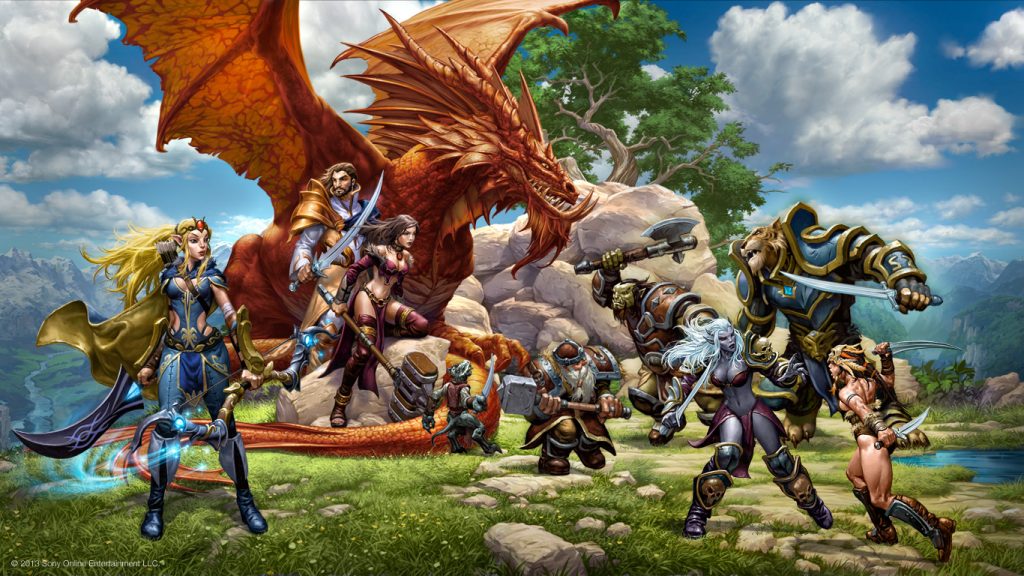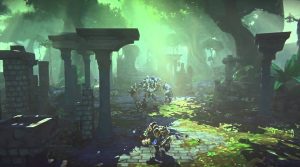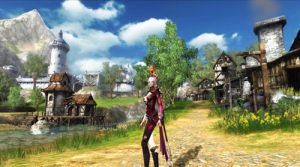I’m not holding my breath on this one. We’ve all been there and done that with games like Shadowbane (remember breathlessly awaiting that while playing DAoC or EQ?), Vanguard, Age of Conan, Warhammer, Darkfall, Aion… Disappointment piled on disappointment as we dove into those games with both feet–forgetting to hold our breath as we went in and then nearly drowning on the stench of failure. Not that any of those games were entirely without merit, but all were ultimately disappointments and the result has consistently been that we, as gamers, end up crawling back to our safe spot. The problem is that that safe spot–typically EQ, DAoC, EQ2, or Worlds of Warcraft–grows increasingly tired and stale with each return. What’s happened, why don’t we feel the love for them that we once did? The problem is that they’re not the games we knew and loved so long ago. They’ve changed while we were away, and we’ve changed–we’ve been changed by all the different gaming options and alternatives we’ve found in other games. So that game that was the hot babe you once lusted after has become a cougar, still hot, but a bit long of tooth. Or, in EQ and DAoC’s case a grandma cougar. Ok, all joking aside, what’s happened is that these games have become “mature” products. The bugs and problems evident in new games have been bludgeoned out of them over time; content has been added, and more added again; quests and mobs have been adjusted, most often becoming easier; gear has been changed, upgraded; clasess have been changed countless times, beefed up in one patch, slammed with the nerf bat in another. At the same time, the graphics engines and UIs have remained essentially static, gradually becoming obsolete relative to those found in other games and now, in the case of EQ and DAoC, antiquated. That makes the games feel dated and stale, the visual imagry flat and dull. Additionally, the games themselves have been changed by developers and marketers desperate to keep their product relevant, to keep milking that cash cow for awhile longer. Originally Everquest was a challenging, community based game–a time sink to some–where you had to work with others (groups) to level and to accomplish quests. At times it was intensely frustrating, but at the same time unbelieveably rewarding. As a player you felt a real sense of accomplishment when you leveled or completed a quest line. World of Warcraft changed all that. WoW was, and is, insanely popular with many people because it was designed to be less resource intensive all the way around. The graphics were bright and cartoony; more visually appealing than those found in the older Everquest and DAoC, but less complex and easier for systems to render than the graphics used by games like EQ2 and Vanguard. WoW was also designed to be less resource intensive with regard to the investment of player’s time and energy. WoW provided players with much easier gratification: mobs were easily soloable, quests were simple and easy to complete without the help of large, well coordinated groups. These factors expanded the appeal of MMO gaming to a larger market: younger kids and casual gamers who didn’t want to invest extensive amounts of time to their gaming habit. SoE observed this exposive popularity and responded. The result was changes in both Everquest and Everquest 2, and later Vanguard as well, to make them on par with WoW. The gaming market has matured with far more options available to the discerning consumer, but SoE has failed to take advantage of this by transitioning its various games into “niches” within those markets, choosing instead to focus all resources towards head to head competition with WoW. Original EQ was far, far more challenging than its successors (WoW and EQ2) and that challenge was the basis of its allure that kept it alive once WoW and EQ2 were released. Yet SoE’s response to the changing market was to “dumb down” all three of it’s product lines in the fantasy MMO genre (EQ, EQ2 and Vanguard) to WoW levels rather than take advantage of the diversity potential of the 3 different product lines. The result has essentially been to create 3 insanely similar products all competing for the same customer base that was already being dominated by yet another product by a different manufacturer. Even worse, Everquest Next appears to be more of the same, except that it not only looks to play like WoW, it also LOOKS like WoW now too, offering little hope for improvement in the choices available in the future. Top that “dumbed down” game off with SoE’s general distaste for implementing viable PvP into any of it’s products–thus shutting out a large, fertile market in that area–and the ultimate result is dwindling, dissatisfied customer base across the board. Players want variety, not “same shit, different game.” To restore their product’s viability SoE has to offer something “different'” from the other options available, or make their product superior in some way. So far they have done neither. In the case of classic EQ, in order to keep it viable SoE needs to give the entire product a major face lift and tummy tuck (update graphics and UI), and then offer something different or superior to what is currently on the market. The easiest way to do this would be to return the game to its more challenging, more intellectually stimulating, roots to appeal to players wanting that kind of game experience and consistently dissatisfied with the nearly instant gratification they find in EQ2 or WoW. |
 Everquest Next is Sony Online Entertainment’s new contender for the next great salvation of the fantasy MMO market
Everquest Next is Sony Online Entertainment’s new contender for the next great salvation of the fantasy MMO market
